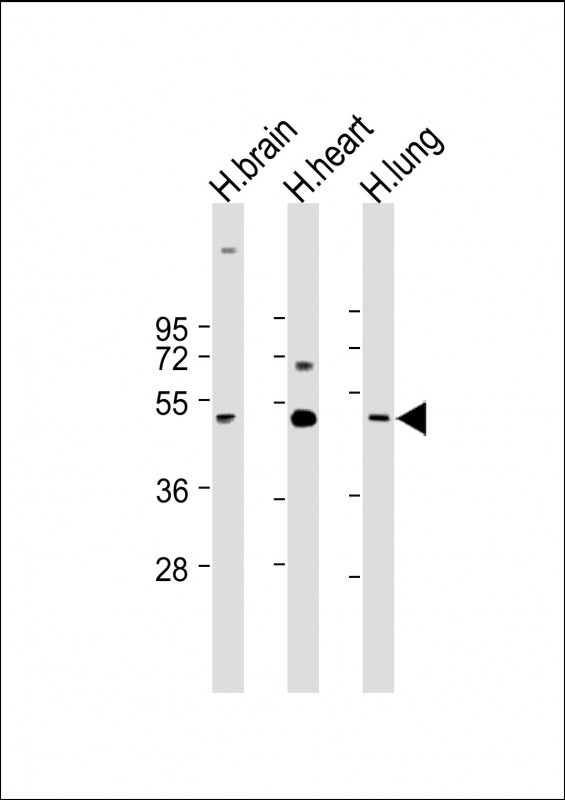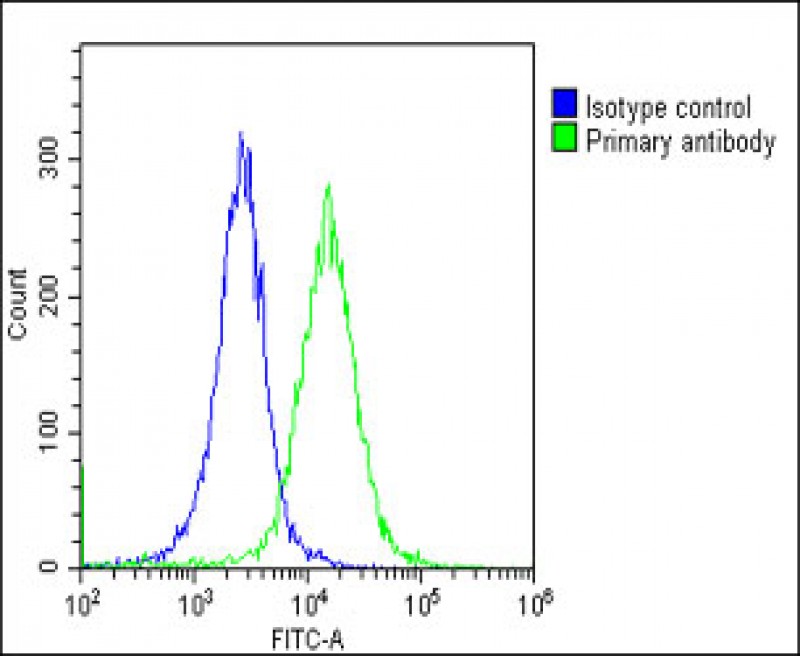

| WB | 1/2000 | Human,Mouse,Rat |
| IF | 咨询技术 | Human,Mouse,Rat |
| IHC | 咨询技术 | Human,Mouse,Rat |
| ICC | 技术咨询 | Human,Mouse,Rat |
| FCM | 1/25 | Human,Mouse,Rat |
| Elisa | 咨询技术 | Human,Mouse,Rat |
| Aliases | Fractalkine, C-X3-C motif chemokine 1, CX3C membrane-anchored chemokine, Neurotactin, Small-inducible cytokine D1, Processed fractalkine, CX3CL1, FKN, NTT, SCYD1 |
| Entrez GeneID | 6376 |
| WB Predicted band size | 42.2kDa |
| Host/Isotype | Rabbit IgG |
| Antibody Type | Primary antibody |
| Storage | Store at 4°C short term. Aliquot and store at -20°C long term. Avoid freeze/thaw cycles. |
| Species Reactivity | Human |
| Immunogen | This CX3CL1 antibody is generated from a rabbit immunized with a KLH conjugated synthetic peptide between 272-306 amino acids from the Central region of human CX3CL1. |
+ +
以下是关于CX3CL1抗体的3篇代表性文献,按规范格式整理:
---
1. **文献名称**:*Targeting CX3CL1 inhibits atherosclerosis in mice*
**作者**:Combadière C, et al.
**摘要**:该研究通过使用抗CX3CL1中和抗体,在小鼠动脉粥样硬化模型中验证了阻断CX3CL1-CX3CR1轴可减少单核细胞黏附和斑块形成,提示其作为抗动脉粥样硬化治疗靶点的潜力。
---
2. **文献名称**:*Anti-CX3CL1 antibody alleviates cognitive impairment in Alzheimer's disease model mice*
**作者**:Liu Z, et al.
**摘要**:研究发现,CX3CL1抗体通过抑制小胶质细胞过度活化及神经元凋亡,改善Aβ诱导的阿尔茨海默病模型小鼠的认知功能,揭示了CX3CL1在神经炎症中的关键作用。
---
3. **文献名称**:*CX3CL1 neutralization ameliorates experimental autoimmune encephalomyelitis by suppressing T cell infiltration*
**作者**:Garcia JA, et al.
**摘要**:在多发性硬化症(EAE)模型中,抗CX3CL1抗体通过减少中枢神经系统内T细胞迁移和促炎因子释放,显著缓解疾病严重程度,为自身免疫性神经疾病提供新治疗策略。
---
如需扩展检索,建议结合PubMed或Web of Science平台,以关键词“CX3CL1 antibody” + “therapeutic”/“neutralizing”进一步筛选近年研究。
CX3CL1. also known as fractalkine, is a unique chemokine that exists in both soluble and membrane-bound forms. It binds exclusively to the CX3CR1 receptor, playing critical roles in immune cell migration, inflammation, and cell adhesion. Structurally, CX3CL1 features a chemokine domain atop a mucin-like stalk, enabling its dual functionality: as a chemoattractant for CX3CR1-expressing cells (e.g., monocytes, T cells, and NK cells) in soluble form, and as an adhesion molecule in membrane-bound form.
CX3CL1 antibodies are essential tools for studying this chemokine's expression, localization, and function. They are widely used in techniques like Western blotting, immunohistochemistry, and flow cytometry to detect CX3CL1 in various tissues and disease models. Neutralizing antibodies specifically help investigate CX3CL1/CX3CR1 signaling pathways (e.g., JAK/STAT, MAPK) and their involvement in pathological processes.
Research highlights CX3CL1's dual role in diseases – promoting inflammation in conditions like atherosclerosis and rheumatoid arthritis, while exhibiting neuroprotective effects in Alzheimer's and Parkinson's diseases. Antibodies against CX3CL1 have therapeutic potential, with studies exploring their use in modulating inflammatory responses and cancer immunotherapy. Cross-species reactivity (human, mouse, rat) is a key consideration when selecting these antibodies for experimental models.
×